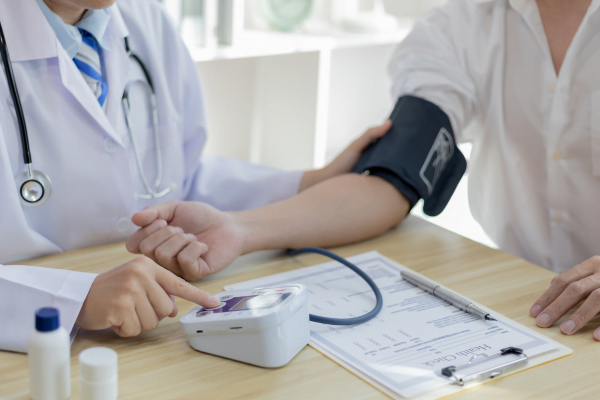High blood pressure, or hypertension, is a prevalent condition impacting millions worldwide. Often undetected until major health problems develop, understanding high blood pressure, its dangers, and ways to manage it is essential for addressing this silent threat effectively.
Understanding High Blood Pressure
High blood pressure arises when the force of blood pushing against artery walls is consistently too high. Over time, this can overload the heart, damage blood vessels, and pose serious health risks such as heart disease and stroke.
Blood Pressure Fundamentals
Blood pressure is measured in millimeters of mercury (mm Hg) and includes two numbers: systolic (upper number) and diastolic (lower number). The systolic value reflects the pressure when the heart beats, while the diastolic value reflects the pressure when the heart rests between beats.
Recognizing Stroke-Level Blood Pressure
Stroke level blood pressure, or hypertensive crisis, occurs when readings soar to extremely high levels. A systolic reading of 180 mm Hg or higher and/or a diastolic reading of 120 mm Hg or higher requires urgent medical intervention.
Risks Associated with High Diastolic Blood Pressure
Although both systolic and diastolic pressures are important, elevated diastolic pressure can indicate arterial stiffness and elevate the risk of heart disease, stroke, and other complications. Regularly monitoring both values is vital for comprehensive blood pressure management.
Heart Rate versus Blood Pressure
While related, heart rate and blood pressure are distinct metrics. Blood pressure gauges the force of blood against the artery walls, whereas heart rate measures the number of heartbeats per minute. Both are crucial for cardiovascular health and warrant regular scrutiny for optimal wellness.
High Blood Pressure with Low Heart Rate
Some individuals experience high blood pressure coupled with a low heart rate. This scenario can indicate underlying health issues and necessitates thorough medical evaluation to determine the appropriate treatment.
High Blood Pressure Among Young Adults
While often associated with older adults, hypertension also affects younger individuals due to poor dietary habits, lack of physical activity, stress, and genetics. Early detection and lifestyle adjustments are crucial to circumvent complications.
The Four Stages of High Blood Pressure
High blood pressure is categorized into four stages, ranging from elevated blood pressure to hypertensive crisis. Each stage carries different risk levels and recommended interventions.
Stage 1 Hypertension
Stage 1 hypertension is indicated by a blood pressure range of 130-139 mm Hg systolic or 80-89 mm Hg diastolic. Although moderate, it represents an increased cardiovascular risk. Management strategies include lifestyle adjustments such as a healthier diet, increased physical activity, and stress reduction. Medication may not be needed at this stage but vigilant monitoring is necessary to prevent progression.
Stage 2 Hypertension
Stage 2 hypertension is marked by blood pressure readings of 140 mm Hg or higher systolic or 90 mm Hg or higher diastolic. The risk of heart disease and stroke is substantially heightened. Lifestyle changes might need to be aided by medications for better control. Adhering to prescribed treatment and regular check-ups are crucial for effective management.
Hypertensive Crisis
A hypertensive crisis denotes extremely high blood pressure and is categorized as either urgent or emergency. An urgent crisis involves severe hypertension without immediate organ damage, with readings of 180 mm Hg systolic or higher and/or 110 mm Hg diastolic or higher. An emergency crisis involves severe hypertension with acute organ damage signs, such as chest pain or neurological symptoms.
White Coat and Masked Hypertension
White coat hypertension occurs when blood pressure spikes in clinical settings due to stress but remains normal in other settings. Masked hypertension is when blood pressure is normal in clinical settings but elevated elsewhere. Both conditions require careful monitoring for accurate management.
Hypertension in Your Mid-Twenties
An increasing number of individuals as young as 25 are being diagnosed with high blood pressure. Contributing factors include lifestyle choices, genetics, and environmental influences, underscoring the importance of early detection and preventive measures.
Key Insights
Understanding the severity of high blood pressure is critical for safeguarding your cardiovascular health. Being informed, regular monitoring, and making healthy lifestyle choices are key to effectively managing hypertension and mitigating associated risks. Empower yourself with knowledge to take control of your health.
Frequently Asked Questions (FAQs)
Why is hypertension known as the “silent killer”?
Hypertension is termed the “silent killer” because it often presents no symptoms until substantial damage has occurred. Regular blood pressure checks are essential because untreated high blood pressure can lead to severe health issues over time.
When does blood pressure peak during the day?
Blood pressure typically peaks during daytime hours, particularly in the morning. This phenomenon, known as morning hypertension, highlights the importance of checking blood pressure at various times to ensure accurate evaluation and tailored treatment.
What constitutes blood pressure at stroke-level?
Stroke-level blood pressure is generally identified as a hypertensive crisis, characterized by systolic readings of 180 mm Hg or more and/or diastolic readings of 120 mm Hg or more. Immediate medical attention is required to prevent severe complications like stroke.
